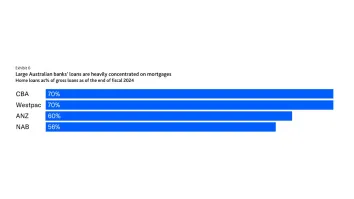
AT1 write-down ‘negligible’ to APAC banks, but should they still worry?
Analysts said APAC banks will suffer no direct impact from the Swiss bank but should keep an eye out on regulators.
Credit Suisse’s $17b write-down of Additional Tier-1 (AT-1) notes early this year has caused quite a stir in the banking industry, particularly following other recent banking crises in the Western hemisphere.
AT-1 bonds – also known as “CoCo” bonds, as they are designed to be “contingent convertible” – are a type of hybrid debt that can be converted into equity if a predetermined event occurs.
In simpler terms, Nicholas Antonio T. Mapa, ING Bank N.V. Manila’s senior economist, said in a written response to Asian Banking and Finance: “[AT-1] bonds act as additional capital to act as a buffer for banks; but they can be converted into equity in the event that the bank will need to lower debt,”
Since the global financial crisis of 2008, this instrument was created to avoid a bigger catastrophe for corporations so big that national institutions would have to intervene.
“In the event of a crisis, these bonds can be converted into equity and partially or fully written down temporarily or permanently. This depends on the bond prospectus, which usually includes triggers, such as if a capital ratio falls below a certain level or if the regulators believe the bank is no longer viable,” said Gary Ng, senior economist at Natixis Corporate & Investment Banking, in a separate correspondence.
The consequences of the Credit Suisse write-down have raised questions about the impact it could have on other regional institutions, particularly in the Asia Pacific (APAC) region. But financial experts have not provided a clear answer on the matter
With the Swiss investment bank UBS Group’s takeover of Credit Suisse for a humble CHF3b ($3.4b) and the Swiss authorities’ write-down, investors are in a quandary on whether or not these bonds are worth the trouble.
ALSO READ: Credit Suisse’s AT1 debt write down to raise market prices for new issuances
How APAC has fared
As there may be concerns over the impact of AT-1 bond losses on global banks, Natixis Research notes that Asia has not experienced extreme cases with heavy dependence on these bonds – perhaps, up to 40% for some entities. But banks in the region still face risks.
“The reliance on using AT-1 to raise capital is all-in-all the same among banks notwithstanding a smaller fall in bond prices in Asia,” Natixis’ APAC Chief Economist Alicia Garcia Herrero and economist Ng said in a note.
AT-1 bonds in Asia declined by 4.3% on average, compromising big international banks in Hong Kong. The average was smaller than the double-digit decline seen in other markets, Natixis showed.
“Banks based in Asia but with a global presence or rumoured to have large AT-1 holdings, also suffered. For the rest, the decline is relatively mild. As such, while it is hard to say Asia is fully sheltered, at least it is not in a hurricane’s eye,” Natixis’ note added.
Other than AT-1 bonds, Tier-2 bonds in Asia slightly fell, landing at 1.1%. And although the repricing of AT-1 notes poses risks, Ng said it is unlikely that Asia will experience anything close to a “full-blown global financial crisis.”
“It is likely that some investors will pick Asian names if they want to invest in AT-1 bonds, but the general sentiment is still cautious now,” he said.
Despite a milder selloff in AT-1 notes compared to the global average, lenders might prefer conversion versus write-down clauses. Even if demand peaks, investors would choose Asian banks with lower credit ratings.
Of course, APAC regulators reacted to the banking catastrophes, even more so after the Credit Suisse wipeout.
An example is the Bangko Sentral ng Pilipinas (BSP), the Philippines’ central bank, saying its banking system remains safe and sound despite global turbulence in the industry. Another statement from the Monetary Authority of Singapore (MAS) declared that the Singapore branch of Credit Suisse would remain operational despite the UBS takeover and have been in close contact with the Swiss Financial Market Supervisory Authority (FINMA).
“Regulatory changes can also impact the issuance of AT-1 in the future. Some regional [central banks] may opt to change capital requirements given the recent increase in anxiety over the recent challenges faced by certain banks,” Mapa of ING said.
Meanwhile, Ng said the execution of Basel III entails banks issuing more capital instruments while AT-1 bonds remain to be an option.
“In Asia, most regulators seem to honour the repayment rank, i.e. prioritising AT-1 bondholders over common equity investors, and therefore the Swiss choice in the Credit Suisse rescue may not repeat here,” Ng said.
A report by S&P Global Ratings addressed many of the APAC AT-1 investor concerns, particularly on the chances of misfortune, saying: “We don’t believe the Credit Suisse outcome for AT-1 instruments is an automatic template for Asia-Pacific banks to follow.”
S&P Global referenced back to the Hong Kong Monetary Authority (HKMA) on 22 March, stating that investors of the instruments issued by banks shall anticipate being treated in resolution with the same priority they would receive in a winding-up of the institution. Likewise, shareholders will be the first to soak up losses, followed by AT-1 and Tier 2 bondholders.
“We note, however, that Asia-Pacific resolution frameworks could enable the write-down to zero of AT-1 instruments with principal write-down features if a bank were to enter a formal resolution process,” S&P Global said.
Certain instrument structures permit a provisional write-down, while others may authorise resolution authorities to impose a partial write-down, S&P further explained.
While jurisdictions implement various regulations, it also depends on investors whether they prefer conversion or write-down features.
For Australia, AT-1 instruments would translate to equities in a “loss absorption or nonviability event,” whilst in India, AT-1s are prepped for write-offs despite regulation allowing both options.
“In Japan, terms and conditions of banks who already issued AT-1 (not rated by us) state the instruments would write-down if 1) Commencement of bankruptcy or insolvency process, 2) When the point of nonviability event (PONV) occurred, 3) Loss absorption event occurs, more specifically, when CET1% is estimated by the authorities less than 5.125%, while regulations in Japan also allow both conversion and write down options,” S&P Global said.
ALSO READ: South Korean banks’ loans to households, corporates up in April
Setting expectations
Despite the far-fetched assumptions that Credit Suisse’s fate would ultimately trample on APAC banks, it won’t hurt for the region to stay practical.
“We believe that the direct exposure of Asia-Pacific banks to Credit Suisse AT-1 instruments is negligible. More generally, we note that banks typically have disincentives under regulatory capital rules from investing in other banks’ regulatory capital (such as AT-1s),” S&P Global stated.
But the AT-1 market is not completely bulletproof. S&P Global expects issuance of AT-1 notes by APAC banks could become more expensive, and for some, even challenging.
Only a few reactions were relatively pulled out from market investors in Asia. Mainly because lenders prioritise repricing of AT-1 papers of global banks, Natixis noted.
“While the response also does not reflect a full-fledged crisis mode, there is no reason to believe that the acute risk-off environment will not reach Asian financial institutions or high-yield issuers harder in the future if risk sentiment stays cautious,” the Natixis report added.
However, when the time comes that issuing AT-1 notes may become difficult, APAC banks could meet bigger funding costs on other capital requirements, said Ng. “This may reduce their loan growth and have an impact on banking system stability,” he said.
For Mapa of ING, he remains uncertain, but APAC banks’ ability to access different sources of financing might be impacted more than their capacity to issue AT-1 bonds. “They may be able to source financing but maybe on different terms and rates.” he said.
(CHF1.00 = US$1.12)



















 Advertise
Advertise










